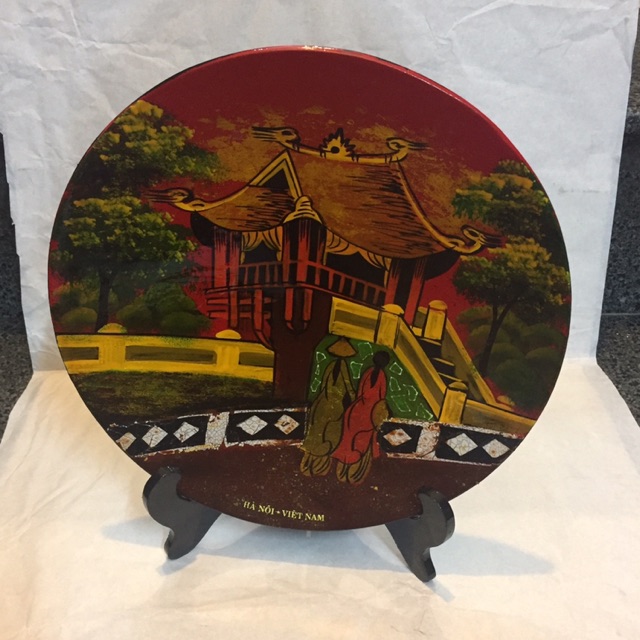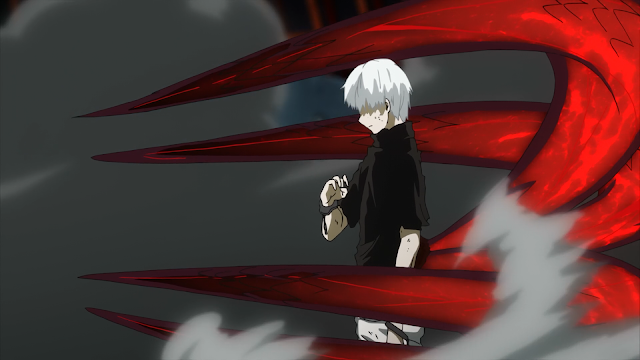Moa
| Moa | |
|---|---|
| Thời điểm hóa thạch: thế Trung Tân - thế Toàn Tân, | |
 Bản phục dựng hình dáng của chim Moa vùng cao, Megalapteryx didinus | |
| Tình trạng bảo tồn | |
| Phân loại khoa học | |
| Giới (regnum) | Animalia |
| Ngành (phylum) | Chordata |
| Lớp (class) | Aves |
| Liên bộ (superordo) | Palaeognathae |
| Bộ (ordo) | †Dinornithiformes Bonaparte, 1853[1] |
| Họ (familia) | †Dinornithidae Bonaparte, 1853 |
| Tính đa dạng[2] | |
| 6 chi, 9 loài | |
| Loài điển hình | |
| †Dinornis novaezealandiae Owen, 1843 | |
| Subgroups | |
xem trong bài | |
| Danh pháp đồng nghĩa | |
| |
Chim Moa[4][5] là tên gọi để chỉ 11 loài chim không biết bay đã tuyệt chủng thuộc 6 chi[6], vốn là những loài đặc hữu của Tân Tây Lan. Hai loài lớn nhất, Dinornis giganteus và Dinornis novaezelandiae, có chiều cao lên tới 3,7 m (12 ft) nếu cổ kéo dài ra, và nặng khoảng 230 kg (510 lb).[7]
Chim Moa là thành viên của nhóm chim không bay thuộc bộ Dinornithiformes.[6] 11 loài chim moa[6] là những chim không có cánh, nói cách khác cánh của chúng tiêu giảm tới mức gần như không còn dấu vết gì chứ không như những loài chim chạy khác vẫn còn duy trì cặp cánh yếu không bay được. Trước đây chúng từng là loài động vật ăn cỏ thống trị suốt hàng nghìn năm trên các cánh rừng, thảo nguyên, vùng cây bụi và phụ núi cao thuộc Tân Tây Lan; và loài thiên địch duy nhất của chúng chỉ là Đại bàng Haast. Tuy nhiên khi những người dân bản địa Māori xuất hiện thì chúng bị săn bắt đến mức tuyệt chủng trong một thời gian ngắn. Phần lớn giới khoa học đều cho rằng, hầu hết các loài chim Moa đã bị tuyệt diệt do săn bắn và do mất môi trường sống trước khi người châu Âu tìm thấy Tân Tây Lan.
Chim Moa liệu có còn sống sót ?
[sửa | sửa mã nguồn]
Mặc dù được thừa nhận rộng rãi là đã tuyệt chủng, nhưng ít nhất từ cuối thế kỷ 19 và gần đây là năm 1993 có nhiều người cho rằng vẫn còn những cá thể chim Moa sống sót[8][9][10][11][12] và năm 2008[13], nhất là ở những vùng hoang vu hiểm trở tại Nam Westland và Fiordland. Những nhà ẩn động vật học và nhiều nhà khoa học vẫn tiếp tục công cuộc tìm kiếm những cá thể còn sống sót,[14] tuy nhiên những luận điểm và bằng chứng của họ (ví dụ dấu chân [13] hay những bức ảnh mờ) không gây được nhiều chú ý từ giới khoa học chính thống, thậm chí chúng còn được xem là giả khoa học.[15]
Trên thực tế, một số loài bị coi là tuyệt chủng đã được tìm thấy còn sống sót, tỉ như loài chim Takahē được tìm thấy trở lại vào năm 1948 khi mà chúng đã được cho là tuyệt chủng từ năm 1898. Tuy nhiên takahē là loài chim có kích thước khá nhỏ (tức là khó tìm, trong khi moa có kích thước rất lớn) và chúng chỉ được tìm thấy khi dấu vết của chúng được nhận diện - trong khi đó chưa có dấu vết nào đáng tin cậy của các chim moa còn sống được tìm thấy cả. Những chuyên gia trong lĩnh vực này vẫn cho rằng khả năng còn sống sót của chim moa là cực kì hiếm, vì điều kiện cho việc sống sót này chính là chúng phải ẩn trốn thành công suốt 500 năm trong một vùng đất thường xuyên bị các tay thợ săn cũng như những người leo núi "viếng thăm", một điều thật sự cực kì khó.[13]
Xem thêm
[sửa | sửa mã nguồn]- Danh sách các động vật đã tuyệt chủng ở New Zealand
- Chim cuối kỷ Đệ Tứ
- Tính chất khổng lồ ở đảo
- Moa-nalo, một loài ngỗng khổng lồ ở quẩn đảo Hawaii đã tuyệt chủng.
- Megafauna
Hình ảnh
[sửa | sửa mã nguồn]Chú thích
[sửa | sửa mã nguồn]- ^ Brands, S. (2008)
- ^ Stephenson, Brent (2009)
- ^ bulletin florida state museum - UFDC Image Array 2 - University of Florida
- ^ Trong ngôn ngữ Māori không dùng "s" để biểu thị số nhiều như tiếng Anh, nhưng trong một số tài liệu tiếng Anh vẫn dùng "moas" để biểu thị số nhiều.
- ^ In some other Polynesian languages (Tahitian, Cook Islands Maori, Samoan...), "moa" is the generic name for chicken, fowl (Dictionary of the Tahitian Academy {fr/ty} Lưu trữ 2008-04-05 tại Wayback Machine; Jasper Buse, Raututi Taringa, "Cook islands Maori Dictionary" (1995); Samoan lexicon Lưu trữ 2010-01-10 tại Wayback Machine)
- ^ a b c OSNZ (2009)
- ^ Davies, S. J. J. F. (2003)
- ^ Gould, C. (1886)
- ^ Heuvelmans, B (1959)
- ^ Animal X classic (2003)
- ^ Worthy, Trevor H. (2009)
- ^ Dutton, Dennis (1994)
- ^ a b c Laing, Doug (2008)
- ^ Hall, Jamie (2006)
- ^ Anderson (1989)
Tham khảo
[sửa | sửa mã nguồn]- Anderson, A. (1989). “On evidence for the survival of moa in European Fiordland” (PDF). New Zealand Journal of Ecology. 12 (Supplement): 39–44.
- Animal X TV (2003). “Animal X Classic”. Truy cập ngày 14 tháng 2 năm 2011. Kiểm tra giá trị ngày tháng trong:
|accessdate=(trợ giúp) - Baker, Allan J. (2005). Huynen, Leon J.; Haddrath, Oliver; Millar, Craig D. and Lambert, David M. “Reconstructing the tempo and mode of evolution in an extinct clade of birds with ancient DNA: The giant moas of New Zealand”. PNAS. 102 (23): 8257–8262. doi:10.1073/pnas.0409435102. PMC 1149408. PMID 15928096.
- Brands, Sheila (ngày 14 tháng 8 năm 2008). “Systema Naturae 2000 / Classification, Order Dinornithiformes”. Project: The Taxonomicon. Bản gốc lưu trữ ngày 7 tháng 3 năm 2009. Truy cập ngày 4 tháng 2 năm 2009. Kiểm tra giá trị ngày tháng trong:
|accessdate=(trợ giúp) - Buller, W.L. (1888). A history of the birds of New Zealand. London: Buller.
- Bunce, Michael (2003). Worthy, Trevor H.; Ford, Tom; Hoppitt, Will; Willerslev, Eske; Drummond, Alexei and Cooper, Alan. “Extreme reversed sexual size dimorphism in the extinct New Zealand moa Dinornis”. Nature. 425 (6954): 172–174. doi:10.1038/nature01871. PMID 12968178.
- Burrows, C. (1981). et al. “The diet of moas based on gizzard contents samples from Pyramid Valley, North Canterbury, and Scaifes Lagoon, Lake Wanaka, Otago”. Records of the Canterbury Museum. 9: 309–336.
- Davies, S.J.J.F. (2003). “Moas”. Trong Hutchins, Michael (biên tập). Grzimek's Animal Life Encyclopedia. 8 Birds I Tinamous and Ratites to Hoatzins (ấn bản thứ 2). Farmington Hills, MI: Gale Group. tr. 95–98. ISBN 0 7876 5784 0.
- Dawkins, Richard (2004). A Pilgrimage to the Dawn of Life, The Ancestor's Tale. Boston: Houghton Mifflin. tr. 292. ISBN 0618005838.
- Dieffenbach, E. (1843). Travels in New Zealand. II. London: John Murray. tr. 195. ISBN 1113508434.
- Dutton, Dennis (1994). “Skeptics Meet Moa Spotters”. New Zealand Skeptics Online. New Zealand: New Zealand Committee for the Scientific Investigation of Claims of the Paranormal. Bản gốc lưu trữ ngày 8 tháng 3 năm 2016. Truy cập ngày 14 tháng 2 năm 2011. Kiểm tra giá trị ngày tháng trong:
|accessdate=(trợ giúp) - Forrest, R.M. (1987). “A partially mummified skeleton of Anomalopteryx didiformis from Southland”. Journal of the Royal Society of New Zealand. 17: 399–408.
- Fuller, Errol (1987). Bunney, Sarah (biên tập). Extinct Birds. London, England: The Rainbird Publishing Group. ISBN 0-8160-1833-2. Chú thích có tham số trống không rõ:
|separator=(trợ giúp) - Gill, BJ. (2007). “Eggshell characteristics of moa eggs (Aves: Dinornithiformes)”. Journal of the Royal Society of New Zealand. 37 (4): 139–150. doi:10.1080/03014220709510542.
- Hall, Jamie (2006). “Moas and Other Giant Flightless Birds”. The Cryptid Zoo. Truy cập ngày 14 tháng 2 năm 2011. Kiểm tra giá trị ngày tháng trong:
|accessdate=(trợ giúp) - Hamilton, A. (1894). “On the feathers of a small species of moa (Megalapteryx didinus) found in a cave at the head of the Waikaia River, with a notice of a moa-hunters camping place on the Old Man Range”. Transactions and Proceedings of the New Zealand Institute. 27: 232–238.
- Hartree, WH. (1999). “A preliminary report on the nesting habits of moas in the East bờ biển của the North Island”. Notornis. 46: 457–460.
- Heuvelmans, Bernard (1959). On the Track of Unknown Animal. New York, NY: Hill & Wang.
- Hill, H. (1913). “The Moa—Legendary, Historical and Geographical: Why and When the Moa disappeared”. Transactions and Proceedings of the Royal Society of New Zealand. 46: 330.
- Holdaway, R. N. (2000). Jacomb, C. “Rapid Extinction of the Moas (Aves: Dinornithiformes): Model, Test, and Implications”. Science. 287 (5461): 2250–2254. doi:10.1126/science.287.5461.2250. PMID 10731144.
- Holdaway, R.N. (1997). Worthy, T.H. “A reappraisal of the late Quaternary fossil vertebrates of Pyramid Valley Swamp, North Canterbury”. New Zealand Journal of Zoology. 24: 69–121. doi:10.1080/03014223.1997.9518107.
- Horrocks, M. (2004). et al. “Plant remains in coprolites: diet of a subalpine moa (Dinornithiformes) from southern New Zealand”. Emu. 104 (2): 149–156. doi:10.1071/MU03019.
- Hutton, F.W. (1875). Coughtrey, M. “Notice of the Earnscleugh Cave”. Transactions and Proceedings of the New Zealand Institute. 7: 138–144.
- Huynen, Leon; Gill, Brian J.; Millar, Craig D.; Lambert, David M. (30 tháng 8 năm 2010). “Ancient DNA Reveals Extreme Egg Morphology and Nesting Behavior in New Zealand's Extinct Moa”. Proceedings of the National Academy of Sciences. 107 (30): 16201. doi:10.1073/pnas.0914096107.
- Huynen, Leon J. (2003). Millar, Craig D.; Scofield, R. P. and Lambert, David M. “Nuclear DNA sequences detect species limits in ancient moa”. Nature. 425 (6954): 175–178. doi:10.1038/nature01838. PMID 12968179.
- Laing, Doug (5 tháng 1 năm 2008). “Birdman says moa surviving in the Bay”. Hawkes Bay Today. APN News & Media Ltd. Bản gốc lưu trữ ngày 24 tháng 7 năm 2011. Truy cập ngày 14 tháng 2 năm 2011. Kiểm tra giá trị ngày tháng trong:
|accessdate=(trợ giúp) - Millener, P. R. (1982). “And then there were twelve: the taxonomic status of Anomalopteryx oweni (Aves: Dinornithidae)”. Notornis. 29 (1): 165–170. Bản gốc lưu trữ ngày 19 tháng 1 năm 2012. Truy cập ngày 1 tháng 2 năm 2012.
- OSNZ (2009). “New Zealand Recognised Bird Names (NZRBN) database”. Ornithological Society of New Zealand Inc. Truy cập ngày 14 tháng 2 năm 2011. Kiểm tra giá trị ngày tháng trong:
|accessdate=(trợ giúp) - Owen, Richard (1879). Memoirs on the Extinct Wingless Birds of New Zealand, with an Appendix of Those of England, Australia, Newfoundland, Mauritius and Rodriguez. London: John van Voorst.
- Phillips, Matthew J. (2010). Gibb Gillian C.; Crimp Elizabeth A. and Penny, David. “Tinamous and Moa Flock Together: Mitochondrial Genome Sequence Analysis Reveals Independent Losses of Flight among Ratites”. Systematic Biology. 59 (1): 90–107. doi:10.1093/sysbio/syp079. PMID 20525622. Truy cập ngày 1 tháng 2 năm 2010. Kiểm tra giá trị ngày tháng trong:
|accessdate=(trợ giúp) - Polack, J. S. (1838). New Zealand: Being a Narrative of Travels and Adventures During a Residence in that Country Between the Years 1831 and 1837. I. London: Richard Bentley. tr. 303, 307.
- Purcell, Rosamond (1999). Swift as a Shadow. Mariner Books. tr. 32. ISBN 0395892287.
- Stephenson, Brent (5 tháng 1 năm 2009). “New Zealand Recognised Bird Names (NZRBN) database”. New Zealand: Ornithological Society of New Zealand. Truy cập ngày 10 tháng 5 năm 2010. Kiểm tra giá trị ngày tháng trong:
|accessdate=(trợ giúp) - Turvey, Samuel T. (2005). Green, Owen R. and Holdaway, Richard N. “Cortical growth marks reveal extended juvenile development in New Zealand moa”. Nature. 435 (7044): 940–943. doi:10.1038/nature03635. PMID 15959513.
- Vickers-Rich, P. (1995). et al. . “Morphology, myology, collagen and DNA of a mummified moa, Megalapteryx didinus (Aves: Dinornithiformes) from New Zealand”. Tuhinga: Records of the Museum of New Zealand Te Papa Tongarewa. 4: 1–26.
- Wood, JR. (2007). “Moa gizzard content analyses: further information on the diet of Dinornis robustus and Emeus crassus, and the first evidence for the diet of Pachyornis elephantopus (Aves: Dinornithiformes)”. Records of the Canterbury Museum. 21: 27–39.
- Wood, JR. (2008). “Moa (Aves: Dinornithiformes) nesting material from rockshelters in the semi-arid interior of South Island, New Zealand”. Journal of the Royal Society of New Zealand. 38 (3): 115–129. doi:10.1080/03014220809510550.
- Wood, J.R. (2008). Worthy, T.H., Rawlence, N.J., Jones, S.M., Read, S.E. “A deposition mechanism for Holocene miring bone deposits, South Island, New Zealand”. Journal of Taphonomy. 6: 1–20.
- Worthy, T.H. (1989). “Mummified moa remains from Mt. Owen, northwest Nelson”. Notornis. 36: 36–38.
- Worthy, T.H. (1998a). “Quaternary fossil faunas of Otago, South Island, New Zealand”. Journal of the Royal Society of New Zealand. 28 (3): 421–521. doi:10.1080/03014223.1998.9517573.
- Worthy, T.H. (1998b). “The Quaternary fossil avifauna of Southland, South Island, New Zealand”. Journal of the Royal Society of New Zealand. 28 (4): 537–589. doi:10.1080/03014223.1998.9517575.
- Worthy, T.H. (1993). Holdaway, R.N. “Quaternary fossil faunas from caves in the Punakaiki area, West Coast, South Island, New Zealand”. Journal of the Royal Society of New Zealand. 23: 147–254.
- Worthy, T.H. (1994). Holdaway, R.N. “Quaternary fossil faunas from caves in Takaka Valley and on Takaka Hill, northwest Nelson, South Island, New Zealand”. Journal of the Royal Society of New Zealand. 24 (3): 297–391. doi:10.1080/03014223.1994.9517474.
- Worthy, T.H. (1995). Holdaway, R.N. “Quaternary fossil faunas from caves on Mt. Cookson, North Canterbury, South Island, New Zealand”. Journal of the Royal Society of New Zealand. 25 (3): 333–370. doi:10.1080/03014223.1995.9517494.
- Worthy, T.H. (1996). Holdaway, R.N. “Quaternary fossil faunas, overlapping taphonomies, and paleofaunal reconstructions in North Canterbury, South Island, New Zealand”. Journal of the Royal Society of New Zealand. 26 (3): 275–361. doi:10.1080/03014223.1996.9517514.
- Worthy, Trevor H. (2002). The Lost World of the Moa. Holdaway, Richard N. Bloomington: Đại học Indiana Press. ISBN 0253340349.
- Worthy, Trevor H. (2009). “A moa sighting?”. Te Ara - the Encyclopedia of New Zealand. Truy cập ngày 14 tháng 2 năm 2011. Kiểm tra giá trị ngày tháng trong:
|accessdate=(trợ giúp) - Yong, Ed (2010). “DNA from the Largest Bird Ever Sequenced from Fossil Eggshells”. Discover Magazine. Bản gốc lưu trữ ngày 13 tháng 11 năm 2011. Truy cập ngày 14 tháng 2 năm 2011. Kiểm tra giá trị ngày tháng trong:
|accessdate=(trợ giúp)
Liên kết ngoài
[sửa | sửa mã nguồn] Tư liệu liên quan tới Moa tại Wikimedia Commons
Tư liệu liên quan tới Moa tại Wikimedia Commons
 GIẢM
21%
GIẢM
21%
 GIẢM
13%
GIẢM
13%
 GIẢM
21%
GIẢM
21%
 GIẢM
27%
GIẢM
27%
![[Review Sách] Điều kỳ diệu của tiệm tạp hóa Namiya](https://down-tx-vn.img.susercontent.com/8fef976e7fdbed68de49b58b2421f741.webp) GIẢM
16%
GIẢM
16%





![[Tóm tắt sách] Vượt bẫy cảm xúc | Cẩm năng cân bằng hệ thống cảm xúc phức tạp trong mỗi người](https://down-bs-vn.img.susercontent.com/04f93085d98f4ae9b7a1a6eccef66513.webp)



